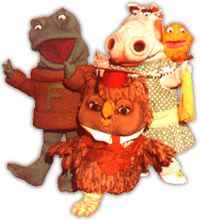Below you will find the syllabi for my two Fall 2011 classes at Southeastern University.
Arrive, Survive and Thrive in Prof. Nixon’s Classes, Fall 2011 Edition
An Open Note to All of Prof. Nixon’s Students:
It seems like summers get shorter every year. This summer, I was asked to become the Interim Chair of the Communication Department at Southeastern University, so my summer was spent with several days a week on campus preparing for the fall. I hope that your summer was fulfilling, whatever you chose to do.
You will soon be able to see the syllabi for my two fall courses, PR Applications and Writing for Digital Media, at my Scribd site (update: available now). If a syllabus is updated during the semester, you’ll find out in class, and the current version will always be available at Scribd. To learn which books and supplies you will need now, see Getting a Jumpstart on Prof. Nixon’s Fall 2011 Classes.
So that we can make the most of this semester, please (Please, PLEASE) take some time to read through the blog posts I’ve included here. I promise you, it will be well worth your time. (How often do professors let you get inside their heads, letting you know their tips for success and their pet peeves?)
- Prof. Nixon’s Teaching & Learning Philosophy
- Shhh. Here are Nine Ways to Annoy Prof. Nixon
- 9 Things I Learned From My Students
- Show Up Unprepared? Then You’re a Loser*
- Keeping Organized by Using Google Calendar
- How to Fail a Class (Without Really Trying)
- Ten Ways NOT to Prepare for College Advising
- My End of Semester Rant, Kinda
Additionally, here are a few more tips:
- When communicating with me via e-mail (or Facebook), always put your course number (such as COMM 2322) in the subject line to help me immediately identify who you are and frame your questions or comments. Do your best to write in full sentences, paying attention to standard English grammar and spelling. Always sign your e-mails with your first and last name, as your e-mail address will not make that readily apparent to me.
- When submitting an assignment in BlackBoard, always put your last name as part of the file name, and also include your name in the document itself. Papers submitted without your last name as part of the file name cannot earn full credit.
- If an assignment is due in BlackBoard, the only way to get full credit for the assignment is to submit it in BlackBoard. (E-mailing an assignment to me can be risky; I receive 250+ e-mails a day, and there’s a chance I will not even see it in my inbox.)
- Follow me on Twitter, if you really want to get inside my head. (What’s Twitter?)
Let’s make this a great semester together!
(PS: If you’re one of my Fall 2011 students reading this post, please leave a reply to this post so that I can know you have read it. If your reply doesn’t show up immediately, no worries — I may need to approve it before it appears, if you’ve never commented on my blog before.)
Getting a Jumpstart on Prof. Nixon’s Fall 2011 Classes

If you’re looking to get a jumpstart on my classes this fall, here are the books and other required resources that we will be using. I’ve linked to many of them at Amazon.com, but of course you can purchase them from anywhere you like. I recommend you try the Facebook Marketplace first, so you can get a good deal AND help a fellow student.
Public Relations Applications (COMM 2322)
- Syllabus (will be posted by mid-August)
- Wilcox, D.L., Cameron, G.T., Reber, B.H., & Shin, J. (2010). THINK public relations. Boston: Allyn & Bacon.
- Subscribe to Ragan Communications’ PR Daily
- Establish an account at Poynter’s News University (if you already have an account from a previous semester, you do not need a new one)
Writing for Digital Media (COMM 2423)
- Syllabus (will be posted by mid-August)
- Carroll, B. (2010). Writing for digital media. New York: Routledge.
- Establish an account at Poynter’s News University (if you already have an account from a previous semester, you do not need a new one)
Questions? As always,

(PS: Syllabi for my classes will be posted in mid-August.)
9 Things I Learned From My Students, Spring 2011 Edition
Like all semesters, Spring 2011 had its ups and downs. Here are a few things I learned, in no particular order:
- I was impressed with the writing and design skills of many of my students with their blog assignments. Some of them went far above and beyond my expectations, notably Cindy Cromeans, Amber Sakis, Sarah Allen, Kyle Ashcraft and Megan Getter. I must remember to share these outstanding examples with students in the fall.
- I should not bother to hold any office hours for the first 3/4 of the semester, and pack them all into the last 1/4 — as this is when most of my students decide to stop by. (Okay, I probably won’t do that. But I am tempted.)
- I may need to be more specific in my assignment directions. For example, even though we had multiple discussions in class about the assignments, some of them still had a hard time understanding that the “Topic of the Week” for their blogs was due during a specific week. (Any idea how I could be clearer in writing about this one?)
- I was beyond delighted when students would share links via Twitter or bring up current events or PR news in class. It didn’t happen often, but when it did, I was thrilled.
- I need to reinforce our department’s attendance policy several times, especially early in the semester, even though it’s plainly stated in the syllabus. Some students were “surprised” when their grades were lower than they had anticipated. Since so much of what we cover in my classes is based on class discussions, being physically (and mentally!) present is critical. It’s also good practice to show up to class just like they will have to show up to work once they graduate.
- I will need to be clearer that when I put a hyperlink in a blog post, it’s for a reason. That reason is to provide amplification or examples about the points I was writing about. I fielded many questions about information that I’d linked to.
- I need to remember that not all students in my PR classes are as passionate about public relations and social media as I am. (We have a combined PR/journalism major at my university, and many students are much more interested in the journalism side of the major than the PR side.)
- I should continue to attend students’ outside activities often. It was great seeing them notice when I showed up (often unannounced) for campus and non-campus events, including one wedding proposal!
- 9. I may need to lower my expectations that students will be fully prepared for class by reading the assigned materials, listening to the assigned podcast or writing the assigned blog post. I need to come up with an alternate plan (other than dismissing the unprepared students or the entire class) when they are unprepared for the discussion I had expected to have.

Wrapping Up #COMM2322 with WKRP’s Turkey’s Away

[Updated from a similar post in June 2010.]
As we start wrapping up our spring semester in Public Relations Applications class, it’s time to end the semester in my traditional way: by watching a classic episode of the classic late ’70s / early ’80s TV show “WKRP in Cincinnati” :: “Turkeys Away.”
According to the Internet Movie Database:
“[Station manager] Mr. Carlson is beginning to feel useless at the new formatted rock station so he decides to create a big Thanksgiving Day promotion. His idea? Get a helicopter, with a banner attached to it saying “Happy Thanksgiving From WKRP…” Then, based on a botched promotion from a radio station in Arkansas, live turkeys are dropped from a helicopter. Chaos ensues.”
Take 20 or so minutes to watch the episode below, keeping in mind what you’ve learned in COMM 2322 during the semester.
So what can public relations students learn about how NOT to do a promotion from Mr. Carlson’s fiasco? I’ll get the list started:
- Communicate with your entire team before launching a promotional campaign (or a turkey).
- Do your research! It’s best to learn ahead of time that turkeys don’t fly.
- Get permission before doing a stunt.
What would you add to this list? Add your thoughts in the comments below.
Key Learnings in #COMM4333 Writing for PR Spring 2011

It’s hard to believe the semester is almost over, but it most certainly is — at least if we can trust our calendars.
As a way of reviewing what we covered and learned in COMM 4333 (Writing for PR and Advertising), each student will:
- Choose a toy animal from a basket in class.
- Name the animal.
- Write the letters of the animal’s name down the left margin of a paper.
- Come up with something we discussed in COMM 4333 that starts with each letter.
- Reply to this blog post with a comment including the animal’s name & what they learned. Put a star/asterisk in front of the most important thing learned. (NOTE: Copy the comment before you submit it, and save it in a Word doc.)
- Send a tweet with the most important thing learned and the class hashtag (#COMM4333)
After each student is done with this, we’ll go around the room and each student will share his/her starred item — the key learning.
Any why is “New Zoo Revue” in the title of this post? It was among my favorite childhood TV shows. (It’s a little painful watching the production values in the show now, but I loved it as a child.)
Key Learnings in SPC 4350 AKA New Zoo Revue

It’s hard to believe the semester is almost over, but it most certainly is — at least if we can trust our calendars.
As a way of reviewing what we covered and learned in SPC 4350 (Social Media for PR and Advertising), each student will:
- Choose a toy animal from a basket in class.
- Name the animal.
- Write the letters of the animal’s name down the left margin of a paper.
- Come up with something we discussed in SPC 4350 that starts with each letter.
- Reply to this blog post with a comment including the animal’s name & what they learned. Put a star/asterisk in front of the most important thing learned.
After each student is done with this, we’ll go around the room and each student will share his/her starred item — the key learning.
Any why is “New Zoo Revue” in the title of this post? It was among my favorite childhood TV shows. (It’s a little painful watching the production values in the show now, but I loved it as a child.)
Seeking Feedback: Best Blogs & Podcasts for Spring 2011
Though I love getting feedback from all sorts of people, this short survey is designed specifically for students in my public relations courses this spring. I will share the results on my blog by the end of April.
Public Relations During Times of Crisis
Based on the presentation Crisis Management: The Savvy Communicator by Kami Huyse. Used with permission.



